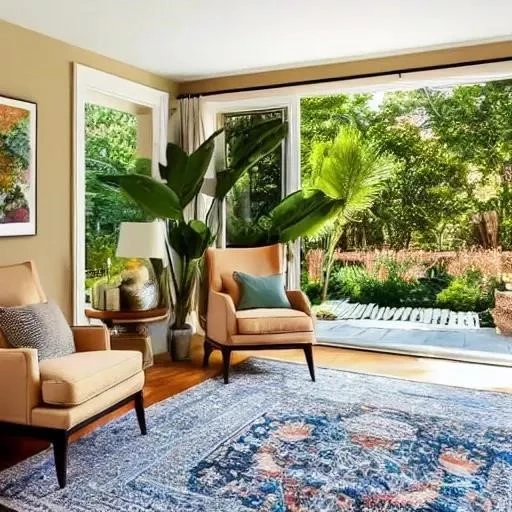In an era defined by innovation and a profound re-evaluation of human needs, one sector is experiencing a quiet yet powerful revolution: aged care interior design․ For too long, facilities designed for our elders often prioritized practicality and efficiency over comfort, dignity, and genuine joy․ Austere hallways, clinical color palettes, and a general lack of personalization became an unfortunate standard, inadvertently diminishing the spirit of those residing within․ However, a seismic shift is underway, driven by a growing understanding that our surroundings profoundly impact our physical health, cognitive function, and emotional state․ This isn’t merely about aesthetics; it’s about crafting environments that actively promote engagement, independence, and a vibrant sense of community, fundamentally transforming the experience of aging․
Today’s pioneering aged care designers are not just decorating spaces; they are meticulously engineering environments designed to empower residents, stimulate their senses, and foster a genuine connection to life․ By integrating insights from neuroscience, psychology, and cutting-edge technology, these visionary designers are creating residences that feel less like institutions and more like personalized homes, vibrant community centers, or even luxurious retreats․ This forward-looking approach acknowledges the unique challenges and opportunities of later life, offering tailored solutions that enhance mobility, reduce anxiety, and remarkably improve overall quality of life․ The future of aged care is bright, promising spaces where every detail contributes to a life lived fully and purposefully․
| Category | Traditional Aged Care Design | Modern Aged Care Design | Key Benefit |
|---|---|---|---|
| Atmosphere & Aesthetics | Clinical, institutional, muted colors, functional furniture․ | Homely, inviting, biophilic elements, vibrant palettes, comfortable furnishings․ | Reduces anxiety, promotes comfort, enhances mood․ |
| Cognitive Support | Limited wayfinding, undifferentiated spaces, potential for disorientation․ | Clear wayfinding, distinct zones, memory cues, sensory stimulation․ | Reduces confusion, supports independence, enhances cognitive function․ |
| Physical Environment | High-contrast, slip-resistant flooring, grab bars often obtrusive․ | Seamless transitions, subtle safety features, adaptive furniture, accessible outdoor spaces․ | Minimizes falls, encourages mobility, supports physical activity․ |
| Social & Emotional Engagement | Centralized common areas, limited private or semi-private spaces․ | Varied social hubs, private nooks, intergenerational spaces, pet-friendly zones․ | Fosters community, reduces isolation, promotes personal choice․ |
| Technology Integration | Minimal, often limited to call bells․ | Ambient monitoring, smart lighting, virtual reality, telehealth, personalized entertainment․ | Enhances safety, promotes independence, provides entertainment and connection․ |
One of the most compelling aspects of this new design philosophy is its deep understanding of biophilia – the innate human connection to nature․ Incorporating natural light, indoor plants, and accessible outdoor gardens isn’t merely decorative; it’s incredibly effective in reducing stress, improving sleep patterns, and boosting mood․ Imagine a resident waking up to soft, diffused sunlight, enjoying breakfast in a dining area overlooking a verdant courtyard, or participating in a gentle gardening activity․ These seemingly small details collectively weave a tapestry of well-being․ Expert opinions consistently highlight how exposure to nature mitigates the symptoms of dementia and depression, offering a serene sanctuary within the care environment․
Beyond biophilia, the principles of universal design are paramount, ensuring spaces are accessible and usable by everyone, regardless of age or ability․ This means thoughtfully designed bathrooms that prioritize safety without feeling sterile, furniture that is comfortable to sit in and easy to rise from, and color schemes that aid visual perception while maintaining a warm ambiance; Consider the strategic placement of distinct artworks or personalized memory boxes outside residents’ rooms, acting as intuitive wayfinding cues that gently guide individuals and reinforce their sense of identity․ Industry examples abound, from innovative facilities like The Green House Project in the U․S․ to progressive European models, all demonstrating that dignified, human-centered design is not just aspirational but eminently achievable․
Looking ahead, the integration of smart technology is poised to further revolutionize aged care interiors․ Ambient monitoring systems can track vital signs and movement patterns discreetly, offering peace of mind without compromising privacy․ Smart lighting systems can mimic natural circadian rhythms, improving sleep quality and reducing evening agitation․ Virtual reality is emerging as a powerful tool for reminiscence therapy, allowing residents to “revisit” beloved places or experience new adventures from the comfort of their chairs․ This forward-looking approach to aged care interior design isn’t just about constructing buildings; it’s about building futures—futures where our seniors continue to thrive, engaged and respected, within environments that truly cherish their golden years․ The transformation is already underway, painting a vibrant, optimistic picture for aging populations worldwide․






